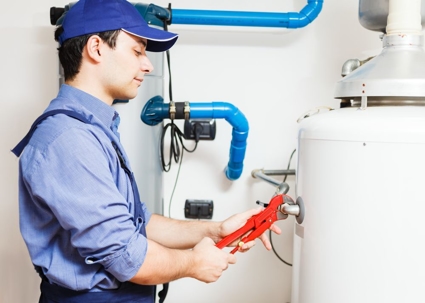Your home needs access to both hot and cold water, but not only can this lead to high water bills—it may also lead to high energy bills. Luckily, there are some upgrades you can make that will boost water and energy efficiency, so you can lower your bills. If you would like to know more, check out these four plumbing upgrades that can boost efficiency.
1. Switch to a Tankless Water Heater
Your water heater tank is convenient for storing hot water, but it also wastes a lot of energy. The tank is designed to keep the water in the tank constantly hot. For this reason, it's nearly constantly using energy even if you have no plan to use hot water. You can boost efficiency with insulation, but switching to a tankless system is a more efficient option.
Tankless systems only use energy when you need hot water. Once you turn on the hot water, the heating element warms the running water. For this reason, it can take a moment for the water to heat up, but you can't run out of hot water. For a cheaper options, you can also install a single point-of-use tankless system for one sink, appliance, shower, etc.
2. Replace Old Toilets
Older toilets can have a lot of problems. First, they are more prone to complications like leaks from excess wear and tear. However, more importantly, older toilets are not as efficient as modern toilets. They waste a lot more water with each flush.
In addition, newer toilets have better options. For example, consider a dual-flush toilet. These allow you to flush the toilet like normal, so it has the power to remove solid waste. However, for liquid waste, you can choose to use less water. The flush isn't as strong, but it's good enough to get rid of liquid waste and small amounts of toilet paper.
3. Repair and Replace Pipes
If your pipes are old, it may be time to consider repairs or replacement. Older pipes are more prone to leaks. Not only does this waste water and increase your water bill, but it can also attract pests and lead to water damage. Older systems may also be more prone to a pipe belly. This occurs when the pipes in the ground sink a little, creating a small belly where water can gather. This can lead to a clog and leak.
Many older pipes may also have been made with older materials that corrode fast. If your pipes corrode, it can impact the quality of your drinking water, but it may also increase the risk of leaks. Even if your pipes seem to be in good condition, ask about pipe insulation to reduce heat loss/gain.
4. Install a Low Flow Shower Head
In many homes, 30 percent of water use comes from the shower. One of the best ways to reduce your water consumption in the shower is by installing a low flow shower head. These shower heads don't have as much pressure, but they also save a lot of water. In fact, on average, you can save about 2,000 gallons of water a year with a low flow shower head.
Some low flow shower heads work like typical shower heads, but aerating heads use water and air, which creates a misty spray instead of separate streams of water. Some may even have advanced technology, so you can set a timer for your shower or better control water temperature.
If you want to boost water efficiency and energy efficiency, make some plumbing upgrades. At the very least, installing new appliances and fixtures can go a long way, but if you want to see major savings, consider major repairs or a tankless water heater. If you would like to know more, contact us at PlumbRite today.
Additional Service Areas
Omaha, NE
La Vista, NE
Bellevue, NE


